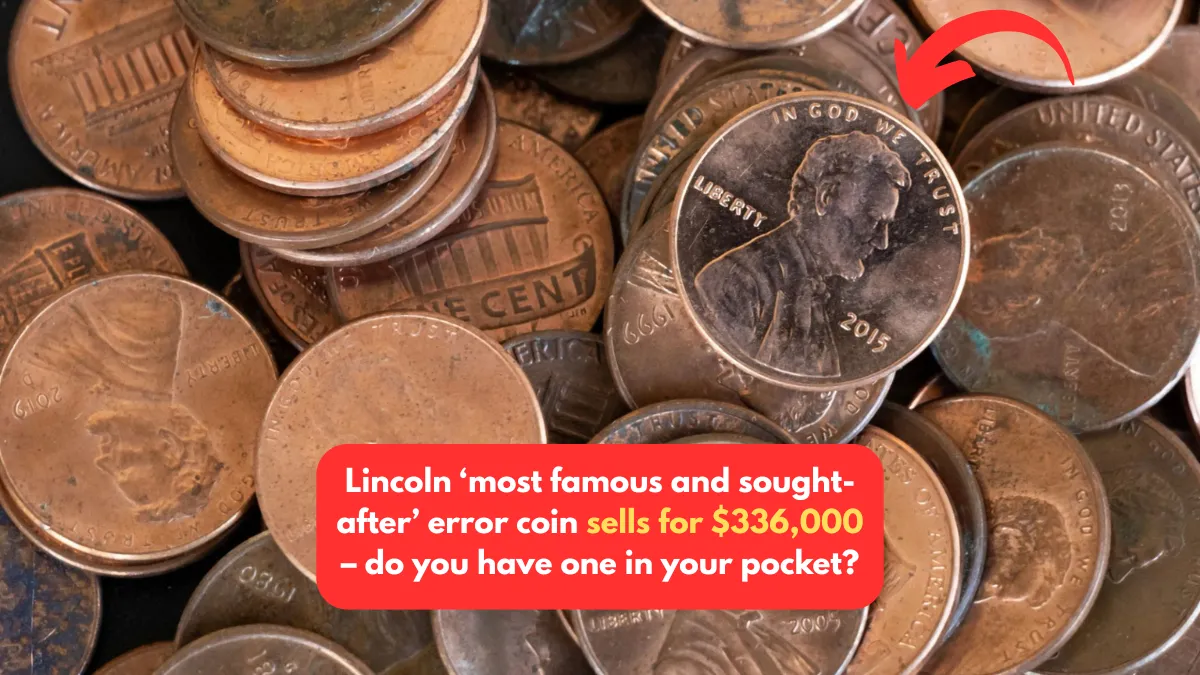A rare 1943 bronze Lincoln cent—one of the most coveted error coins in American numismatics—has recently sold for $336,000 at Heritage Auctions, reigniting interest among collectors and casual coin holders alike.
This particular penny is a product of a minting anomaly during World War II, when the U.S. Mint transitioned from bronze to zinc-coated steel for penny production to conserve copper for the war effort. However, a few bronze planchets remained in the minting equipment, resulting in a limited number—estimated at 30 to 40—of these rare coins.
Why the 1943 Bronze Lincoln Cent Is So Valuable
In 1943, the U.S. Mint produced pennies using zinc-coated steel to save copper for wartime needs. However, a small number of bronze planchets from 1942 were inadvertently used, leading to the creation of these rare error coins. Only about 30 to 40 of these bronze pennies are known to exist, making them highly sought after by collectors.
The most famous among them is the unique 1943-D bronze cent from the Denver Mint, which sold for a record $1.7 million in 2010. Other notable sales include a 1943-S bronze cent from the San Francisco Mint, which fetched $504,000, and a Philadelphia-minted 1943 bronze cent that sold for $372,000.
How to Identify a 1943 Bronze Penny
Determining whether you have a valuable 1943 bronze penny involves a few simple tests:
- Magnet Test: Steel pennies are magnetic, while bronze pennies are not. If your 1943 penny doesn’t stick to a magnet, it could be a rare bronze version.
- Weight Check: Bronze pennies weigh approximately 3.11 grams, compared to 2.7 grams for steel pennies.
- Visual Inspection: Look for a reddish-brown color typical of bronze coins, as opposed to the grayish appearance of steel pennies.
If you suspect you have a 1943 bronze penny, it’s advisable to have it authenticated and graded by a professional coin grading service.
Other Valuable Lincoln Cents
While the 1943 bronze cent is among the most valuable, other Lincoln cents also command high prices:
- 1909-S VDB: The first year of the Lincoln cent, with the designer’s initials, is rare and can be worth thousands.
- 1955 Doubled Die: A minting error caused a noticeable doubling of the date and inscriptions, making these coins highly collectible.
- 1944 Steel Cent: Similar to the 1943 bronze error, a few steel planchets were used in 1944, resulting in another rare and valuable coin.
FAQs
How many 1943 bronze Lincoln cents are known to exist?
Estimates suggest that between 30 to 40 authentic 1943 bronze Lincoln cents exist today. These were accidentally struck on leftover bronze planchets from 1942 when the U.S. Mint had already switched to steel for 1943 pennies.
What makes the 1943 bronze penny so rare and valuable?
Its value lies in its unintentional creation. During World War II, the U.S. Mint used zinc-coated steel to conserve copper for the war. A few bronze planchets were mistakenly used, resulting in this highly sought-after mint error.
How can I find out if my 1943 penny is the valuable bronze version?
You can start with a magnet test—steel sticks, bronze does not. Then weigh the coin: bronze cents weigh about 3.11 grams, while steel cents weigh closer to 2.7 grams. For absolute certainty, submit the coin to a professional coin grading service such as PCGS or NGC.
Are there other error coins like the 1943 bronze penny?
Yes! Other notable errors include the 1944 steel cent (a reverse of the 1943 error), the 1955 doubled die Lincoln cent, and the 1909-S VDB penny, which is rare due to its limited San Francisco mintage and prominent designer initials.
Conclusion
The recent $336,000 sale of a 1943 bronze Lincoln cent highlights the enduring fascination with rare coins and the potential treasures that might be hiding in plain sight. Whether you’re a seasoned collector or someone who occasionally checks their spare change, it’s worth keeping an eye out for these historical rarities.
